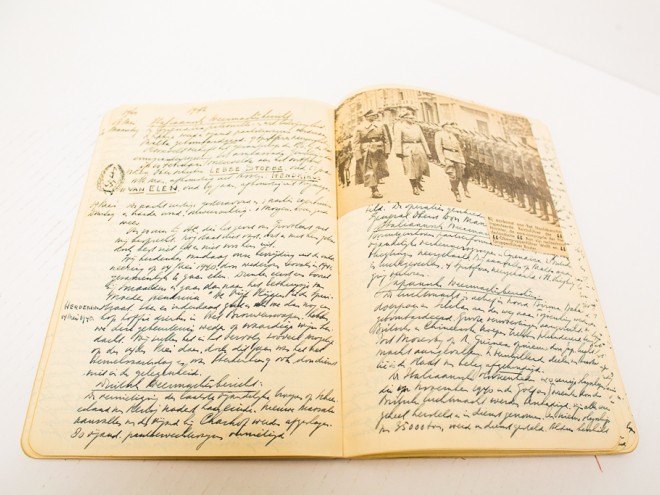Anne Frank’s tragically brief life has become inextricably tied to the memory of her Dutch protectors. For two years, several employees of Otto Frank’s business chose to hide his family from arrest in Nazi-occupied Netherlands. Miep and the Most Famous Diary chronicles the extraordinary courage of Miep Gies, the young woman whose tireless efforts on behalf of Anne ultimately could not save her. Pincus and Solano portray Gies as she herself did — a person for whom the moral choice was the most natural one regardless of the dangers it entailed. Their book shows the cruel abandonment of morals and humanity which reduced Anne to living her life in fear — and Gies’s unwavering commitment to defying that reality.
The book’s front endpaper features photographs of Anne and her Dutch helpers mounted on the plaid background of Anne’s diary cover. Readers immediately enter the story as if it were a normal family album, only to begin with a picture of Miep Gies closing her eyes in fear as she listens to the sound of soldiers’ footsteps mounting the stairs to the Secret Annex. Pincus describes Gies’s terror using a hierarchy of events and emotions: “Worse than the World War II bomber planes buzzing over Amsterdam…worst-ever sound, on this, Miep’s worst-ever day.” Children who have never experienced fear of this magnitude will still relate to the sense of dread, as all Gies’s carefully planned efforts to shelter her friends collapse around her.
Solano’s pictures combine the spare precision of buildings and rooms as clear as a trompe l’oeil painting, with facial expressions as evocative as a silent film. The whole book has a cinematic pace to tell the story of Gies’s life, narrating each moment with deep emotion, and even employing sound effects to highlight particular events. After Gies presents Anne’s diary to her father, he urges her to read it, but Gies refuses: “But, even as Anne’s book is published worldwide, Miep still cannot bear to read it.” The picture shows Gies’s hand spread over a page of the open book; she covers Anne’s words, but her fingertips only touch the edge of a small photo of Anne, leaving it visible to readers. On the following two-page spread, Gies is seated at her desk with the diary but she has lifted her hand from the text. Images of Anne surround her as she recalls her young friend’s life and determines to read what her diary has left to the world.
Since this is a book for young readers, it necessarily offers an optimistic cast to Anne Frank’s tragedy and to the inability of Miep Gies to effect a different ending. The book incorporates Anne’s most optimistic quotes, including her famous statement of faith that “people are good at heart.” The complete version of her diary tells a somewhat different story, as does the near triumph of evil which ended her life in the Bergen-Belsen concentration camp at the age of fifteen. Caregivers and educators should be prepared to discuss with children some of the most painful aspects of this story which are left unsaid, like when Otto Frank learns that “Anne and her sister did not survive the war. Illness overtook them just two months before the Nazi surrender.”
This highly recommended recounting of Anne Frank’s life includes “Author’s Notes,” “More About Miep’s Courage,” and an accessible “Timeline of Miep’s Life.”
Emily Schneider writes about literature, feminism, and culture for Tablet, The Forward, The Horn Book, and other publications, and writes about children’s books on her blog. She has a Ph.D. in Romance Languages and Literatures.




